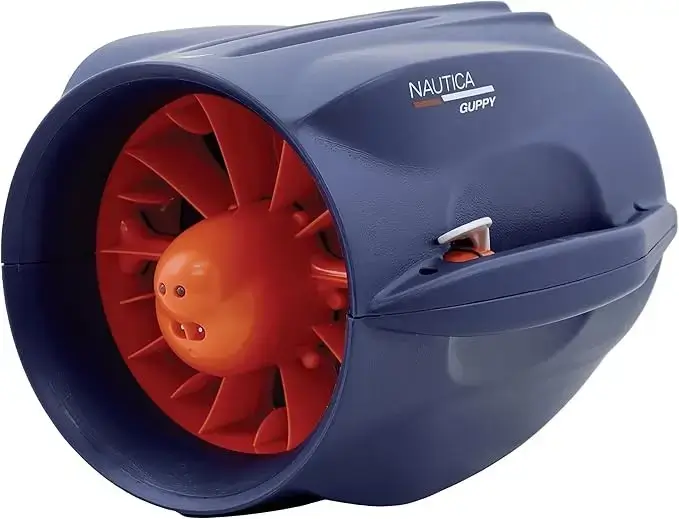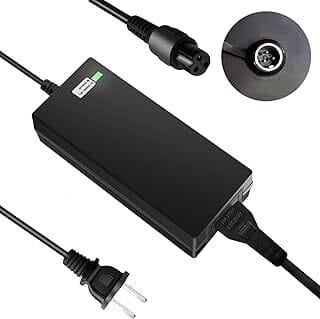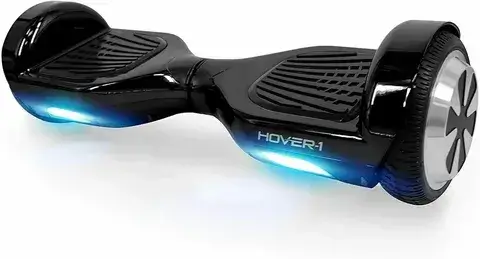Conquer the Waves with a Water Hoverboard: Your Ultimate Guide to Models, How They Work & Safety Tips
Imagine soaring just above the water’s surface, feeling the spray on your face and the rush of saltwater under your feet. This is the thrill of riding a water hoverboard, a futuristic water sport that really flies beyond traditional surfing or wakeboarding. Whether you’re an adrenaline junkie or just looking for a fun new way to experience the water, water hoverboards combine speed and balance for a uniquely exciting adventure on lakes, rivers, or the ocean.
From its sci-fi-inspired beginnings to the latest models, water hoverboards let you carve and glide on water using jet-propelled thrust. They look like surfboards or wakeboards under your feet, but instead of being towed by a boat, they use powerful water jets (or even electric motors) to propel you up and across the waves. In this guide, we’ll explain exactly what a water hoverboard is, how it works, compare top models in a handy table, and walk you through the benefits, buying tips, and safety advice. Let’s dive in!
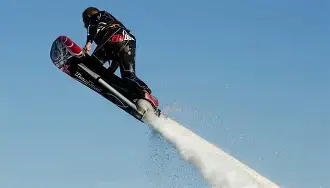
What Is a Water Hoverboard?
A water hoverboard is a hydroflight device that lifts and powers a rider above the water. In practice, it’s a board strapped to your feet with foot bindings, equipped with one or more high-pressure jet nozzles underneath. Think of it as a wakeboard with a built-in jet engine – except the jet engine is powered by water pressure.
Most water hoverboards connect to a power source on a jet ski (personal watercraft) or boat via a long, high-pressure hose. When the jet ski throttle is opened, water is forced through the hose to the board’s nozzles, creating lift. This propels the rider upward or pushes the board forward at speed. As Zapata Racing – the innovators behind the sport – describes it, their HydroBoard (Hoverboard) allows you to “extract power from a PWC [personal watercraft]” and carve through the water like a wakeboard, with the ability to even hop wakes and get airborne.
In short: a water hoverboard uses hydrodynamic thrust to lift you off the water. Riders balance on the deck like a surfer or skateboarder, steering and controlling speed through weight shifts and sometimes a hand-held throttle. It’s the same jet-boosted style as the famous Flyboard, but without handles in front – you’re essentially standing on a “hoverboard” that really hovers a few feet above the waves.
Legendary inventor Franky Zapata unveiled one of the first modern water hoverboards. As Interesting Engineering reports, “French company Zapata Racing, created by Franky Zapata… have unveiled the Hoverboard, taking extreme water sports to the next level”. Zapata’s design removed the bulky arm harness of earlier boards, making the ride feel more like traditional boarding sports. According to their release, the Zapata Hoverboard can reach speeds up to 23 miles per hour over the water, allowing for swift turns and big jumps.
In other words, a water hoverboard is not an electric sidewalk hoverboard at all, nor a simple paddleboard – it’s a high-powered water craft that makes you feel like a superhero skimming over the sea.
Table of Contents
How Water Hoverboards Work
Water hoverboards come in a few varieties, but they all rely on propulsion systems to get you off the water’s surface:
- Hydrojet-Powered Boards (Jet Ski-Tethered): The classic water hoverboard hooks up to a jet ski or boat. A 50–60 foot hose pumps a powerful stream of water into the board. This hydro-thrust from the nozzle(s) pushes you upward. As Interesting Engineering explains, “The hydropropulsion system is fed through a 60 foot hose pipe… [allowing] speeds up to 23 miles per hour over the waves”. A throttle handle or an Electronic Management Kit (EMK) lets you signal the jet ski operator to increase or decrease the water flow. By leaning and tilting the board, you steer just like on a wakeboard or skateboard.
- Electric-Powered Boards (E-Foils & Jetboards): Some modern designs use battery-powered electric motors with propellers (often mounted on hydrofoil wings). These electric “foilboards” or jetboards don’t need a jet ski; instead they carry their own power source. While not technically called “hoverboards,” many users lump them in the same category of motorized water boards. A good example is the Fliteboard eFoil, which has a lithium battery and can stay aloft for over an hour. Electric boards typically move on surface mode until you gain speed (around 12–15 mph) to lift the hydrofoil wing and start flying above water. They can reach top speeds around 30 mph, and most batteries last 60–90 minutes per charge.
- Motorized Surfboards: There are also gas-powered surfboards (like JetSurf) that embed an engine and small propeller under the board. These hit high speeds (JetSurf claims about 36 mph) but stay on the water surface – you don’t “hover” above the waves as with a hydrojet board. We’ll focus mainly on the tethered hydrojet boards here, since those match the classic “hoverboard” concept.
In all cases, controlling a water hoverboard is about balance and body movements. As water shoots down from the board, you feel thrust lifting you up. To go higher or faster, you lean forward and signal for more power. To land or slow down, reduce thrust or lean backward. It’s a delicate dance of weight-shifting: too much tilt and the board dives, too little and it spits you out.
Zapata’s marketing materials emphasize the unique feel: “Carve across the water on your Hoverboard… [it] gives you the ability to extract power from a PWC and slice through the water”. In practice, that means after lift-off, you can lean into turns and even jump. Remember, though, the jet ski trailing behind must match your moves. Many setups include a kill-switch cord for safety: if you fall off, it triggers the ski to cut engine.
Key Takeaway: A tethered water hoverboard works via high-pressure water jets from a tow vehicle (jet ski/boat). Electric versions use battery-powered propellers. In either case, faster flows mean higher lift and speed. Most manufacturers recommend at least an hour of instruction or guided training before your first flight, since balancing with thrust underfoot takes practice.
Top Water Hoverboard Models Compared
Ready to see how the major water hoverboards stack up? Below is a comparison table featuring some leading models and types. We include hydrojet-powered boards (like those from Zapata and Wataboard) as well as representative electric boards:
| Model | Propulsion Type | Top Speed | Max Height | Runtime / Power Source |
|---|---|---|---|---|
| Zapata Hoverboard | Hydrojet (Jet Ski) | 23 mph | N/A | Depends on PWC; no internal battery |
| Zapata Flyboard | Hydrojet (Jet Ski) | — (Jet ski power) | 72 ft | N/A (PWC-powered) |
| Wataboard EX2 | Hydrojet (Jet Ski) | — | 50 ft | N/A (PWC-powered) |
| JETSURF Race DFI | Gas Engine (Jetboard) | 36 mph | (Surface only) | ~Tank of fuel (~45 min) |
| Fliteboard eFoil | Electric (Battery) | 30 mph | (Surface only) | 60–90 min battery |
- Zapata Hoverboard & Flyboard: Franky Zapata’s creations were among the first popular models. Both attach to a jetski. The Hoverboard (stand-up only) is simpler; the Flyboard has handlebars and braces. The Hoverboard reaches about 23 mph. The Flyboard can lift riders up to 72 feet into the air (thanks to two jets and hand stabilization). They require a powerful jet ski (extra horsepower).
- Wataboard EX2: Similar to the Flyboard, the Wataboard EX series (US-made) is a plug-and-play flyboard device. It boasts a 360° turning nozzle and high thrust. Wataboard advertises it can lift riders “up to 50 feet in the air” using jet ski propulsion. Top speed is on par with Zapata’s boards (roughly 30+ mph, though exact figures vary).
- JETSURF Race DFI: A bit different – this is a high-performance motorized surfboard with a gasoline engine inside. It reaches 36 mph on water, making it one of the fastest jet-boards available. However, it does not lift the rider out of water (no hydroflight), so “max height” is just surface-riding. Its runtime is limited by fuel tank capacity (roughly 45–60 minutes per tank).
- Fliteboard eFoil: Representing the electric category, Fliteboard is a leading battery-powered foil board. It uses an electric motor and submerged hydrofoil. Once you reach ~12–15 mph, the board rises above the water on its wing. It can top out around 30 mph in calm conditions. Each charge offers about 60–90 minutes of ride time. Note: eFoils don’t actually hover above water like jets – they fly on a wing beneath the surface, but riders often include them under the broad “hoverboard” umbrella.
Each type has trade-offs: tethered boards (Zapata, Wataboard) let you stay aloft indefinitely (as long as the jetski runs), but require a boat and chase person. Electric boards offer freedom from boats and rechargeable power, at the expense of limited battery life and slightly lower lift height. Our summary table emphasizes speed and height – factors important for thrill-seekers – but also remember to consider weight capacity and skill level when comparing these models.
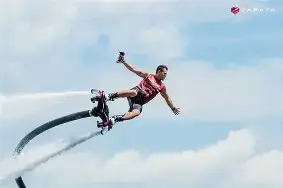
Benefits of Riding a Water Hoverboard
Riding a water hoverboard is more than just a thrill – it offers a host of benefits that make it a great hobby or workout:
- Full-Body Workout: Balancing on a hoverboard engages your legs, core, back, and even arms. You constantly adjust your stance and posture to control the board. As one marine sports guide notes, you use “leg, arm, back, and core muscles” to stay balanced while hovering over water. This builds strength, improves coordination, and can burn major calories (flyboarding is known for intense calorie burn).
- Adrenaline and Fun: There’s nothing quite like the rush of lifting off the water and zooming along the surface. The excitement of flying, spinning, and flipping on a hoverboard is unmatched. The novelty also makes it very social – it’s a great way to entertain friends or make memories on vacation. Plus, you can often capture cool action videos to share.
- Connect with Nature and Stress Relief: Spending time on the water naturally calms the mind. Soaking up the sun, feeling the wind, and laughing (or screaming!) as you fly is a perfect stress-buster. In fact, experts say flyboarding can “reduce your levels of stress” by giving you an outdoor, fun outlet. The ocean environment also provides health perks: saltwater can be good for your skin and breathing salty sea air gets more oxygen in your system. Don’t forget the vitamin D from sunshine on your shoulders – good for bones and mood.
- Unique Experience: Riding a hoverboard is a novel skill. Learning it can boost confidence and give a sense of accomplishment. It’s also more inclusive than one might think: instructors can help beginners get up to speed quickly (some boards are surprisingly easy to lift off with). It’s often said that even total beginners can start soaring in minutes with professional guidance.
In summary, water hoverboarding is thrilling fun that doubles as vigorous exercise and a change of scene. Whether you want high-speed carving or just to dip your toes into a cutting-edge water sport, a hoverboard offers a memorable adventure on the waves.
How to Choose the Right Water Hoverboard
Ready to pick your board? Here are some factors to consider when choosing a water hoverboard:
- Power Source: Decide between a jet-ski-powered board or an electric one. If you already own or can use a personal watercraft (PWC), a tethered hydrojet board like Zapata or Wataboard lets you hover as long as you have fuel. If you don’t have a jetski, look into battery-powered eFoils/jetboards (they require no extra vehicle, but have limited ride time per charge).
- Rider Weight & Size: Check the manufacturer’s weight recommendation. Heavier riders need more thrust or a larger platform to stay buoyant. Some boards offer adjustable floats or jet configurations for bigger riders. For electric boards, know that larger riders may reduce battery run time.
- Experience Level: If you’re a beginner, start with a stable model. Dual-nozzle designs or wider boards generally feel more balanced. Ensure there’s an option for beginner mode or a lower power setting. Many providers offer lessons and supervised runs – it’s highly recommended to get professional instruction before going solo.
- Safety Features: Look for boards with quick-release kill cords (lanyards) and certified floatation. A board with built-in buoyancy will keep you afloat if you fall. Always plan to wear a Coast Guard-approved life vest (and helmet) during use.
- Build Quality & Support: Since hoverboards are high-tech gear, buy from reputable brands with good warranties. Read user reviews on reliability and customer service. Check that replacement parts (like hoses or batteries) are available. Renting or demoing locally can be smart before you commit to buying.
- Budget: Prices vary widely. Professional hydrojet hoverboards (with full hose kit) can run several thousand dollars. Basic electric models start in the low thousands. Factor in the cost of batteries and maintenance. Avoid super-cheap knock-offs – safety is crucial here.
Key Tips: Ensure your local waters meet depth requirements (hoverboards typically need at least ~13 feet of water). Think about where you’ll ride most often – ocean? Lake? – and choose a board suited for those conditions. And of course, practice makes perfect: plan to spend a session learning and acclimating to the feel of the board before pushing limits.
Water Hoverboard Safety Tips and Best Practices
Safety is paramount when you’re flying over water. Follow these tips to stay safe on your water hoverboard:
- Always Wear a Life Jacket (PFD): No matter how strong a swimmer you are, wear a properly fitting, Coast-Guard-approved life vest. This will keep you afloat during falls and give you confidence as you learn.
- Wear a Helmet: Hydroflight sports can involve height and hard landings. A water sports helmet can protect you from head injuries if you flip or collide.
- Check Water Depth: Make sure the water is deep enough. Manufacturers like Zapata require at least 13 feet of depth under the board. Shallow water or hidden obstacles (rocks, debris) can be very dangerous. Avoid shallow or crowded areas.
- Inspect Your Equipment: Before each session, check the board, hose connections, and any electronics. Look for leaks or cracks. Ensure all clamps and straps are secure. Never use a damaged board or hose.
- Be Aware of Conditions: Always ride in calm, open water. Check the weather – avoid wind, storms, or choppy waves. Don’t try waves or rapids, as violent water can knock you off or damage the board. As one safety guide advises, stick to deep, flat water and steer clear of breaking waves.
- Use a Kill Switch: If your setup has an engine kill cord (lanyard), attach it to your wrist or life jacket. That way, if you fall off, the jet ski engine will shut off immediately. Never disconnect this safety device.
- Stay in Range: Keep the jet ski or power source close. The rider of the board should be visible to the jet ski throttleman at all times. Clear communication (hand signals or radio) between rider and boat driver is crucial.
- Know Your Limits: Start slow. Don’t try flips or high jumps until you’re comfortable. And remember, as X-Jetpacks notes, hydroflight “is a sport with risks… training [and] proper care of equipment” can lessen dangers. Take lessons from a qualified instructor if possible.
By following these safety practices – wearing protective gear, checking conditions, and using equipment wisely – you’ll greatly reduce your risk of injury. Water hoverboarding is an extreme sport, but with common sense precautions you can enjoy it safely.
Maintenance and Care for Your Water Hoverboard
Taking good care of your hoverboard keeps it performing at its best season after season. Here are some maintenance pointers:
- Rinse After Each Use: Saltwater is corrosive. After riding, rinse the board, hoses, clamps, and connectors thoroughly with fresh water. This removes salt and sand. Pay special attention to nozzles and the PWC pump intake if you used sea water. Let everything dry completely.
- Battery Care (Electric Boards): Remove the battery from the board when not in use. Charge it as per manufacturer instructions. A well-maintained Li-ion battery will give 60–90 minutes of ride time. Store batteries at around 50% charge in a cool, dry place (not fully depleted or fully charged long-term). Use only the supplied charger to avoid damage.
- Inspect and Tighten: Regularly check fasteners, straps, and bolts on the board. Vibration can loosen screws on the deck and mount. Tighten any loose hardware before riding. Also check the hose clamps and connections for the jet ski adapter – replace any worn or split hoses.
- Lubricate Moving Parts: If your board or attachments have bearings or swivels, follow the manufacturer’s advice on lubrication. For example, some models recommend greasing the hose swivel fitting to prevent corrosion.
- Check Electronics: Ensure any remote controls, throttles, or sensors are functioning. Rinse and dry them after use. Examine wires for wear. Keep them sealed from water intrusion.
- Storage: Store your hoverboard in a dry, shaded area away from direct sun and high heat. UV light and heat can weaken materials over time. If storing for winter, run the battery to about half-charge, then remove it. Cover the board to keep dust out.
- Routine Servicing: If something feels off (strange noises or loss of power), pull over and inspect immediately. For PWC-tethered boards, consider annual service on the jet ski pump/nozzle if used heavily. For electric boards, have the battery professionally checked every couple of years.
Proper care protects your investment and keeps your rides smooth. Even with hard use, hoverboards only need simple maintenance: wash off debris, inspect for damage, and keep batteries charged. Following these steps will help your hoverboard last for many adventures.
Conclusion
Water hoverboards are one of the most exciting innovations in watersports, blending flying-like thrills with surfing and wakeboarding. In this guide, we’ve covered what a water hoverboard is, how it works, and compared leading models. We highlighted the exhilarating benefits (from full-body fitness to pure adrenaline) and given practical advice on choosing the right board for you. Importantly, we’ve stressed safety – always wear a life jacket, check depth (>=13 ft), and train responsibly.
Whether you’re looking for the best water hoverboard model or just curious how these contraptions function, remember: practice makes perfect. Start under supervision, learn the signals, and build up your moves. When done right, water hoverboarding offers an unforgettable rush.
Ready to experience the waves like never before? Grab a life vest, hop on your board, and let go. And if you enjoyed this guide, share your thoughts below! Comment with which water hoverboard you’d try first, share this article with your adventure friends, and subscribe for more tips on the coolest water sports gear and techniques. Stay stoked, stay safe, and fly high above those waves!
FAQ
Q: What exactly is a water hoverboard?
A: A water hoverboard (also called a hydroboard or jet hoverboard) is a board you strap onto your feet that propels you above water. Unlike a skateboard, it uses high-pressure water jets or motors. Most tethered hoverboards hook to a jet ski via a hose. The jetski pumps water through the hose to the board’s nozzles under your feet, lifting you up. So essentially, it’s like surfing on a board powered by a water jet. The result is a thrilling flying feel on the waves.
Q: How do water hoverboards work?
A: It depends on the type. The classic ones use hydrojet propulsion: a hose from a PWC (jet ski) delivers water to a nozzle on the board. When that water shoots out the nozzle under your feet, it pushes you upward by Newton’s third law. Control comes from shifting weight and steering the board. Some newer boards are electric with built-in motors. These have batteries and propellers (often under a hydrofoil) to push you along – think of them like an electric surfboard with a wing. Electric boards typically need 12–15 mph to lift off on the foil, whereas jet-powered boards hover as soon as enough water thrust hits.
Q: What are some top water hoverboard models?
A: Leading models include Zapata Racing’s Hoverboard and Flyboard, which popularized hydroflight. Zapata’s boards reach around 23 mph, and their Flyboard can soar to about 72 ft high. Another is the Wataboard EX2, a US-made hydroboard, capable of lifting riders about 50 ft off the water. For electric options, boards like the Fliteboard eFoil are top-of-the-line (foil bikes that lift above water). Each board has pros and cons (jet-powered vs battery), so the “best” one depends on your needs. For example, the Zapata Hoverboard is praised for performance but costs around $5,850 at launch, while eFoils cost more but need no boat.
Q: Are water hoverboards safe?
A: When used properly, water hoverboarding is relatively safe for healthy riders. Key safety practices include always wearing a life jacket and helmet (hydroflight can be unpredictable). Only ride in deep, obstacle-free water (at least about 13 feet deep) and never in rough weather. Beginners should take instruction or have a spotter. Hoverboards have kill-switch lanyards to stop the engine if you fall. By following guidelines (like those above), most riders have fun without incidents. Remember, as with any action sport, there’s inherent risk – so never attempt dangerous stunts until you’re fully comfortable.
Q: How fast can water hoverboards go and how long can they run?
A: Tethered hydrojet hoverboards can reach speeds in the 20–30 mph range. For instance, Zapata’s Hoverboard tops out around 23 mph. Electric foil boards can be even faster – Fliteboards often hit 30 mph. Runtime depends on your power source: A jet-ski-powered board can ride as long as the jet ski has fuel (often an hour or more). Battery boards typically last around 60–90 minutes per charge in calm water. After that, you’ll need to swap in a fresh battery or refuel. Always plan your session length around your power supply for a worry-free ride.
What do you think of this post?
There are no reviews yet. Be the first one to write one.
- Mastering Hoverboard Riding: The Ultimate 2025 Guide
- Stay Charged Up: Finding the Right for Your Precious hoverboard charger
- Top 5 Hoverboard Chargers That Won’t Let You Down (Buyer’s Guide 2025)
- The Best Hoverboards for Kids (We Test Everything We Recommend!)
- GoTrax Hoverboard Review 2025: 7 Reasons It’s the Best Ride for Kids & Adults
- Glide into the Future: Your Ultimate Guide to Choosing the Perfect Hoverboards
- The Ultimate Hover Board Buying Guide for 2025: Top Picks, Safety Tips & FAQs



